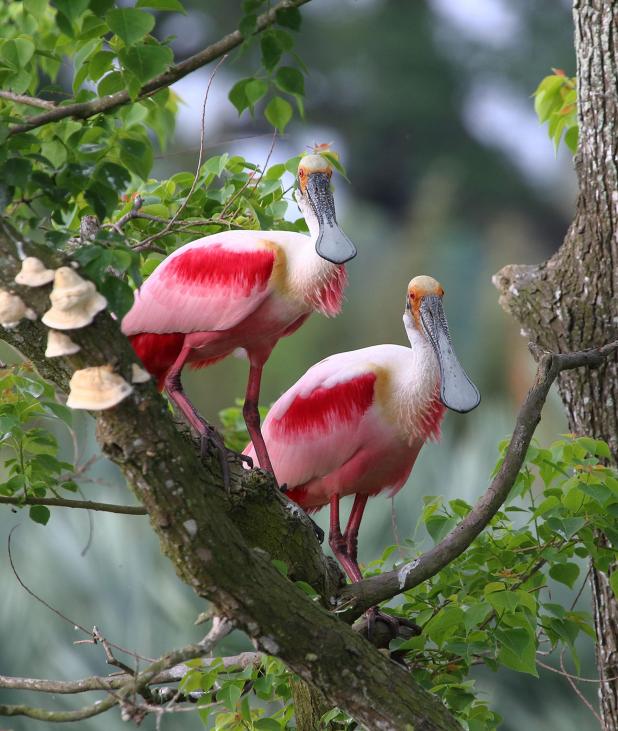
Most roseate spoonbills by early July have fledged their young. You’re likely to find them feeding in agricultural areas at this time of year.
The Review/John K. Flores
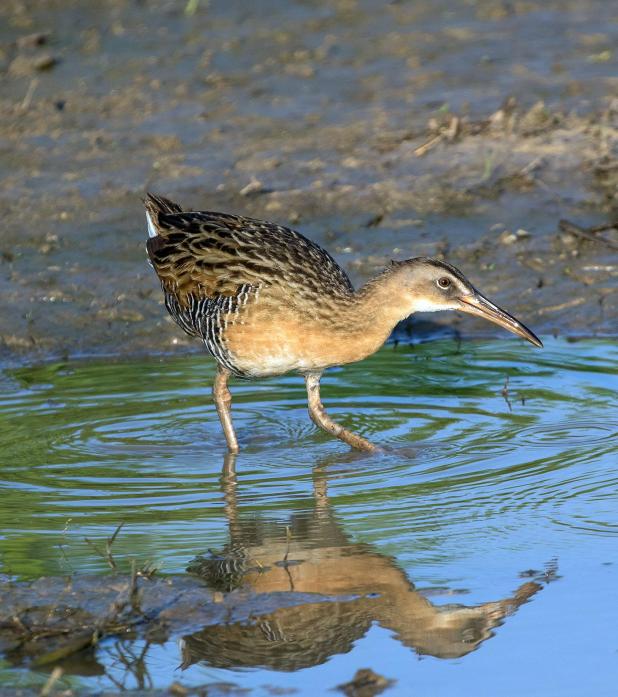
An adult clapper rail
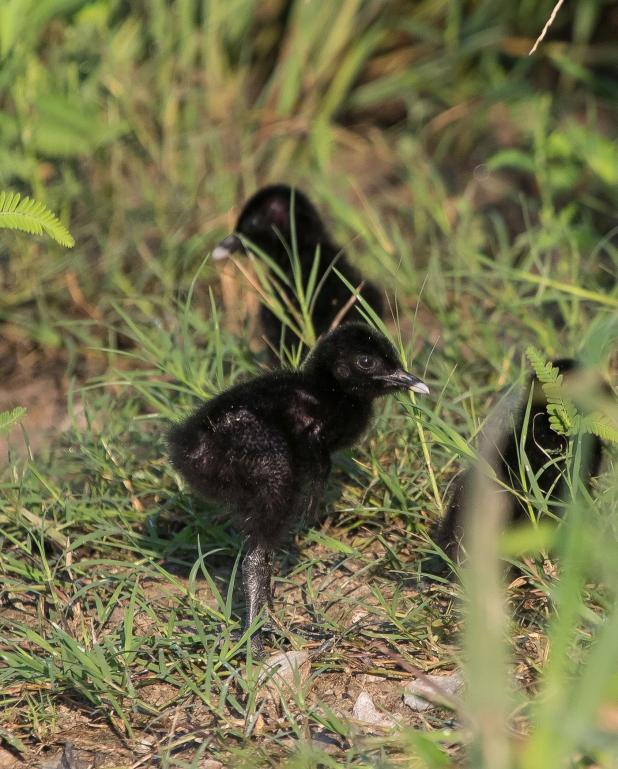
Clapper rail chicks foraging along a rice field levee in southwest Louisiana.
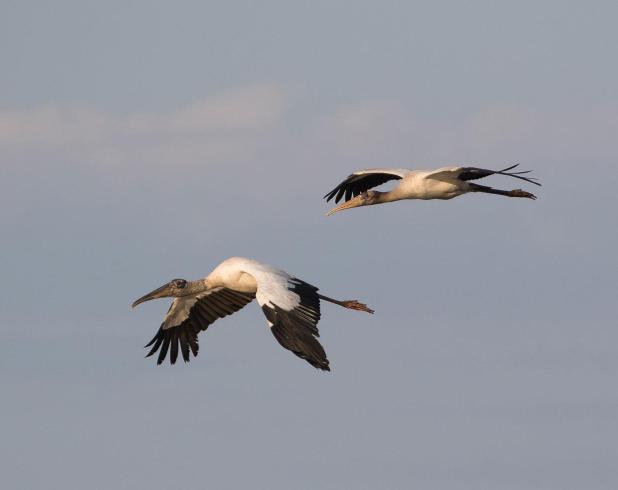
Wood storks visit our coastal regions and the Atchafalaya Basin during the late spring and summer months.
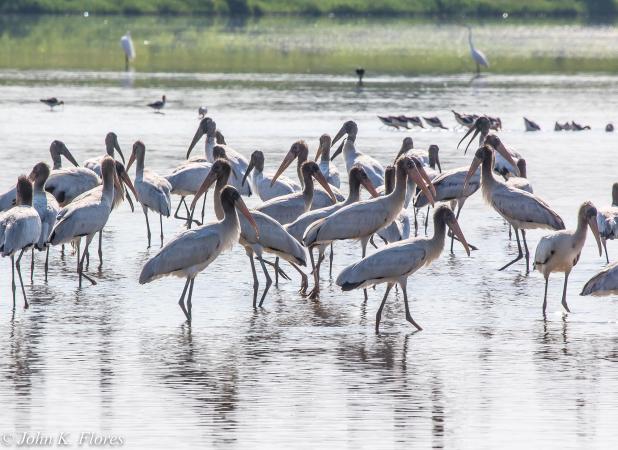
Wood storks feeding in a crawfish pond south of Crowley.
JOHN K. FLORES: Wading birds make the best summer viewing
By the time the first week in July rolls around it’s pretty hot throughout the state of Louisiana, this year being no exception. What’s more, June appears to have been one of the hottest on record.
During the spring, a long list of bird species migrated through the state with some going as far as the arctic circle to reach their breeding grounds. And, by the time they get there, our local birds and many species of migrants that make Louisiana their summer home have already nested, with some fledgling young.
For bird watchers and folks who enjoy being out in nature, the hot summer months can be a slow period when it comes to seeing wildlife. Back in early May, if you took a hike into the bottomland hardwoods, paddled a canoe or kayak into a tupelo-cypress swamp, or sat on the back porch of a vacation cabin near a wooded area on the edge of an overgrown field, you’d have heard singing.
The “sweet-sweet-sweet” sound of the prothonotary warbler, the soft sweet variable warbles of house finches and painted buntings, and the rich repeated “pidaro-pidaro-pidaro” sound of the Carolina wren have all quieted now that the hot summer months and breeding season have come to a close.
Yet, the summer months do offer nature viewing and birding opportunities if you happen to be interested in wading birds.
Though most have fledged their young by late June, a few roseate spoonbills, great egrets, snowy egrets, and little blue herons, are still on the nest, along with white ibis.
But, some of the best places to see some of these waders at this time of year is just west of Lafayette in the rice and crawfish agricultural areas, particularly when the fields are being pumped out.
In these ponds and fields there are lots of invertebrates, minnows, snails, tadpoles, frogs, crawfish, and small catfish available to feed on.
The wading birds have evolved over the years when it comes to Louisiana’s agricultural practices. The birds have figured out big feast days occur when farmers drain these fields.
It’s quite a sight to see 100 or more wading birds of different species gathered around a field drain as water pours into a drainage ditch. The confused prey doesn’t stand a chance of escaping so many hungry beaks and bills.
I’ve come across wading bird feeding frenzies like this on more than one occasion when traveling the back roads just before sunrise south of Crowley and Jennings. The birds are all stacked up on the drain jockeying for the best positions. Every now and then a great egret will use its stiletto beak to poke at a potential usurper.
One Louisiana summer visitor you may come across in these rice/crawfish fields is the wood stork. Wood storks breed during the late winter in Florida and parts of Georgia and South Carolina. According to the American Bird Conservancy, the estimated wood stork population is 250,000, with the majority breeding in Central and South America.
The U.S. population is estimated at roughly 30,000 and considered a species of conservation concern.
Last summer, while sitting along a rice field levee west of Gueydan and South of Lake Arthur watching a mixed flock of egrets, roseate spoon bills, wood storks, and white ibis, I spotted a clapper rail near me grabbing a couple pieces of crawfish from the shallow water. Apparently, the remnants were leftovers from one of those feeding frenzies.
The rail would run out of the grass, grab a piece, and run right back.
When I got up to leave, I noticed five little black puff balls that momma rail was feeding. I was able to snap a couple of photos of them, but when they spotted me, it was if they vanished into nowhere, disappearing before my very eyes. I learned that day these shy rails are masters at using cover for protection.
Other cool wading birds you might see on a trip to agriculture fields in southwest Louisiana are purple gallinules, yellow-crowned night herons, black-crowned night herons,
great blue herons, white-faced and glossy ibis, and green herons.
Most of these birds are active right at sunrise for a couple hours and as the morning heats up move on to shaded cover and trees to perch in through the hotter part of the day.
Be sure to bring a hat, wear long sleeve shirts, put on plenty of sunscreen and bring lots of water to stay hydrated during these hot summer days. Taking a day to check out wading birds can be a fun outing and Louisiana’s agricultural areas coastal wetlands are great places to find them at this time of year.
John Flores is the Morgan City Review’s outdoor writer. He can be contacted at gowiththeflo@cox.net.
